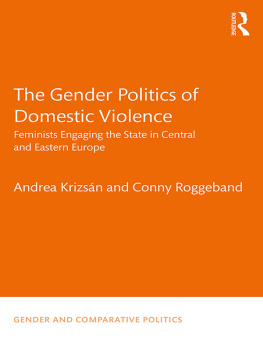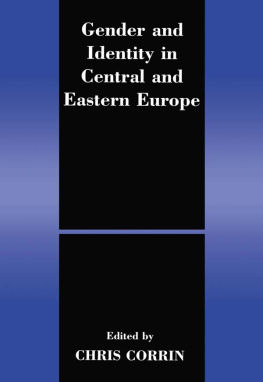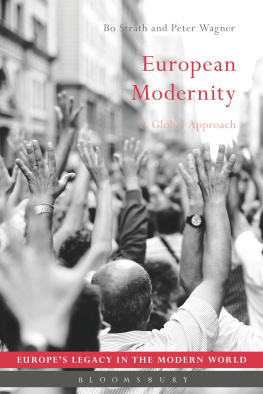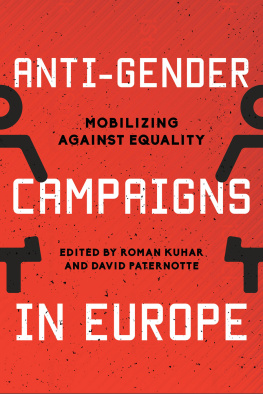University of Ottawa Press, 2010
All rights reserved.
The University of Ottawa Press acknowledges with gratitude the support extended to its publishing list by Heritage Canada through its Book Publishing Industry Development Program, by the Canada Council for the Arts, by the Canadian Federation for the Humanities and Social Sciences through its Aid to Scholarly Publications Program, by the Social Sciences and Humanities Research Council,
and by the University of Ottawa.
We also gratefully acknowledge the Wirth Institute for Austrian and Central European Studies whose financial support has contributed to the publication of this book.
www.press.uottawa.ca
..................................................................................................................
Library and Archives Canada Cataloguing in Publication
Gender and modernity in Central Europe / Agatha Schwartz.
Includes bibliographical references and index.
ISBN 978-0-7766-0726-9
1. Sex role--Austria--History--19th century. 2. Sex role--Austria--History--20th century. 3. Austria--Civilization--19th century. 4. Austria--Civilization--20th century. I. Schwartz, Agatha, 1961-
DB86.G45 2010 943.60441 C2010-900860-X
INTRODUCTION
AGATHA SCHWARTZ
The chapters in this volume represent a selection of papers, the abridged versions of which were initially presented at an international conference, with the same title as this book, held at the University of Ottawa between May 16 and 18, 2008. The papers, written by Canadian, American, and European scholars and academics working in history, literature, art history, sociology, and psychology, seek to make a unique contribution to Central European Studies in Canada, in that they discuss and expand recent developments in the study of gender and modernity in central and East Central Europe.
The dissolution of multiethnic AustriaHungary in 1918 resulted in a complete redrawing of the map of Central and East Central Europe, a process completed with the Treaty of Trianon in 1920. A number of nation states with sizeable ethnic minorities succeeded the once large multiethnic empire. The period between the two world wars, the end of the Second World War, and, more recently, the fall of the Iron Curtain in 1989 have redefined the Monarchys successor states and their borders in various ways. After a brief period of national independence between the two world wars, following the Second World War most of the former constituents of the Habsburg Monarchy were incorporated into the Communist bloc dominated by the Soviet Union. Only Austria remained on the other side of the Iron Curtain, while Yugoslavia, though Communist, preserved its independence from the Soviet Union. In the early 1990s the break-up of both the Soviet Union and the Yugoslav federation brought about yet another redrawing of borders, and several smaller new nation states emerged in the region. These historical changes, followed by the recent gradual and increasing integration of these countries into the European Union, have prompted a resurgence of interest in the legacy of AustriaHungary, and the impact it has had on the political, social and cultural fabric of the countries of Central and East Central Europe. It has also led to the rediscovery of a common rich heritage of urban and cultural modernization, as well as to a rebuilding of the former ties between institutions, communities, and individuals across present state borders, a process sometimes coloured by nostalgia, or tainted by resurgent nationalisms and political considerations.
The time span encompassed in the contributions to this volume is the period between 1867the year of the Ausgleich (Compromise) that brought about the Dual Monarchy of AustriaHungaryand the present, but with an emphasis on the period from 1867 to the aftermath of the First World War. The contributions thus highlight the complexity and tenacity of the Monarchys legacy. At the same time, their focus on the history and continuities of the debates on gender and modernity directly addresses the necessity for a creative discussion between representatives of disciplines, regions, and countries. Discussions about gender, stemming from the need to reassess sexual roles and identities, and to re-evaluate what constitutes femininity and masculinity, occupied a central place in fin-de-sicle European modernist debates in London, Paris, and Berlin just as much as in Vienna, Budapest, and Prague, in a process very much fuelled by women entering spaces previously closed to them, such as the male-dominated bastions of higher education and professions. The presence of a womens movement and a rich literary production by women writers were major though still lesser-known aspects of fin-de-sicle modernity in both constitutional parts of the Dual Monarchy. Just as in many other countries all over the Western world, women were abandoning the role of bearers of meaning for that of makers of meaning on a more massive scale (Bauer, 3), which meant not only that they fought for their social and political rights by organizing over several decades, but also that they actively participated, through both their essayistic and their fictional texts, in the creation of a discourse of their own, and gave their contribution and presented their views in the sometimes heated debates around gender roles. Femininity and masculinity were among the most controversial topics in fin-de-sicle modernity and were linked to a more general discussion relating to a cultural crisis. Doctors, theologians, philosophers, ethnologists, writers, and feminists all participated in the debate.
Traditionally, women had been used as projection surfaces (Fischer, 211) for the male imagination in literature and art. The turn of the 19th and 20th centuries was no exception in this regard: one only has to think of Gustav Klimts or Alphonse Muchas paintings. What was new, however, was that now, with the backing of an organized womens movement, women on a larger scale actively and openly took part in the debate surrounding concepts of femininity and masculinity, and projected their own ideas and desires onto men, while reflecting on the female condition. The opening of the faculties of arts and medicine in Vienna (in 1897 and 1900 respectively) and Budapest (in 1895) led to womens presence in the higher echelons of the medical profession. Their better education also enabled them to be more present as writers, essayists, and journalists. This feminization of culture contributed to a general feeling of insecurity that plagued many modern men, who, according to Robert B. Pynsent (181), were weak and thus challenged by the emancipated new women. The result was an upsurge of a sometimes virulent misogyny, such as in Otto Weiningers infamous misogynist and anti-Semitic classic












